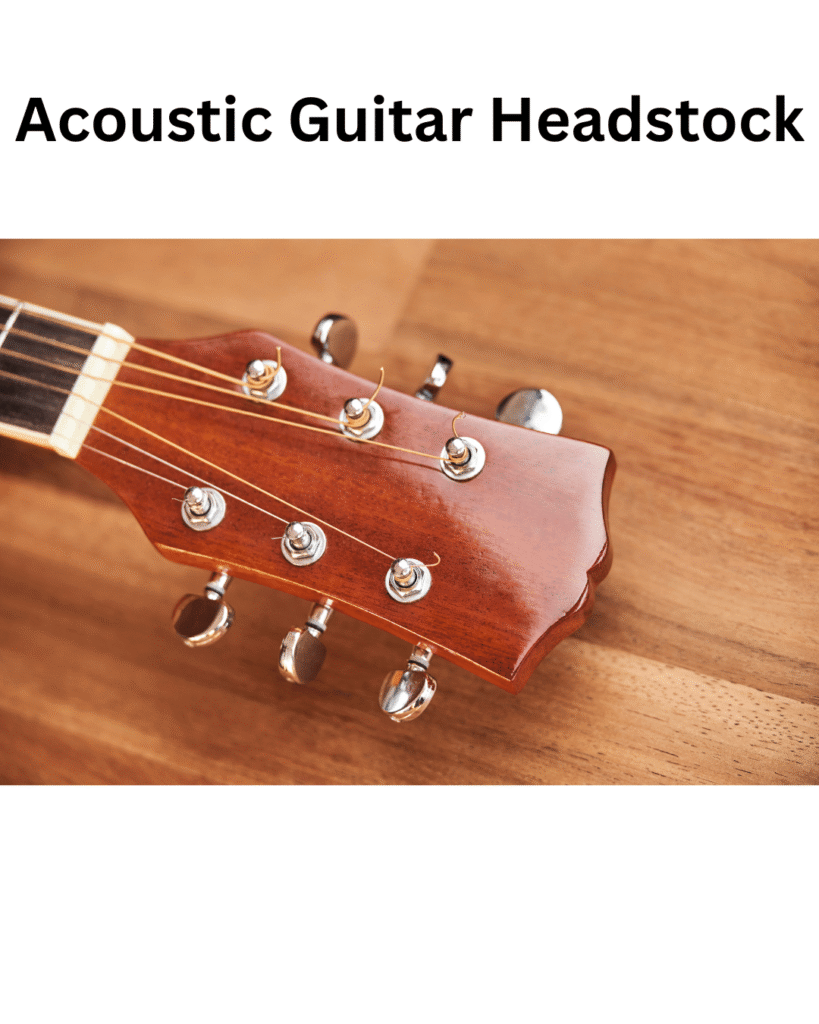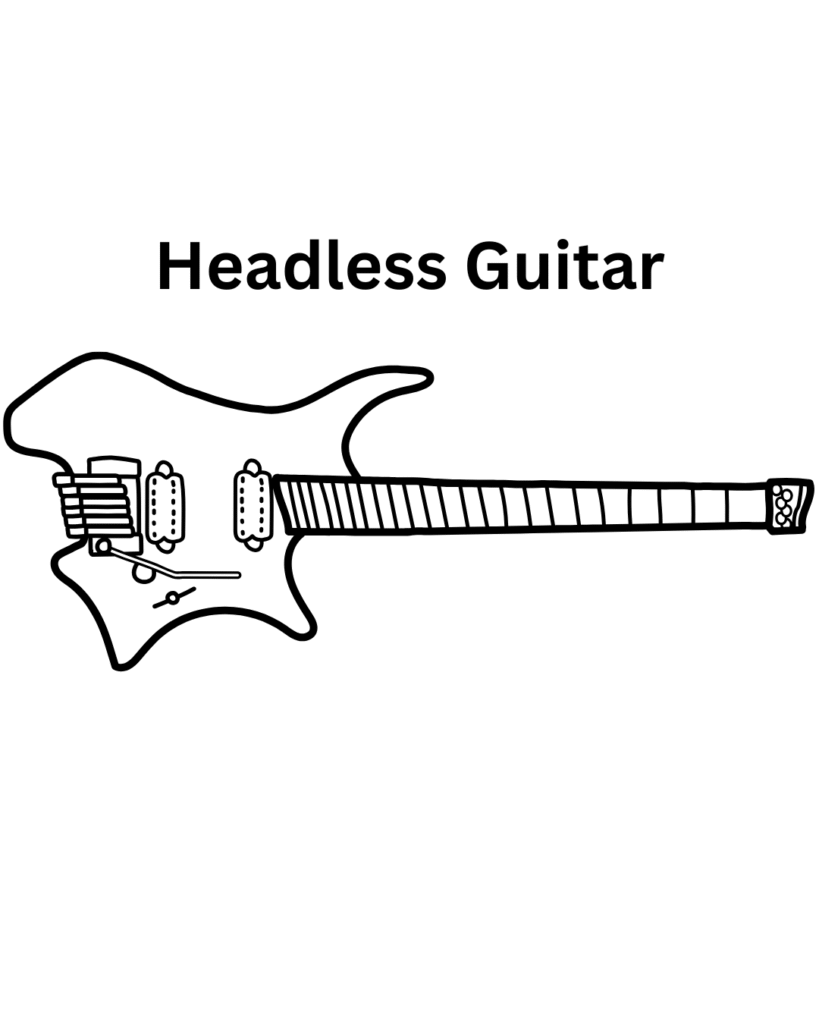Table of Contents
What Is a Headstock?

The headstock is the top part of a guitar, located at the end of the neck.
It holds the tuning pegs (also called machine heads or tuners), which are used to tighten or loosen the guitar strings, which changes the string’s pitch.
What Does the Headstock Do?

The headstock has two main jobs:
- Tune your guitar.
Each string wraps around a tuning peg. Turning the peg adjusts string tension, which changes the note. - Secure the strings.
The headstock anchors one end of each string, while the bridge anchors the other end of each string.
Types of Headstocks

There are three main types of guitar headstocks:
- Straight (Flat) Headstock – Common on Fender guitars. Simple, classic design.
- Angled Headstock – Seen on Gibson-style guitars. Helps maintain string tension and sustain.
- Reversed Headstock – Same function, just flipped. Some players prefer the look or feel. Here’s a reverse headstock example.
3 Quick Facts About the Headstock
- Nut placement: The nut (a small piece that guides the strings) sits between the headstock and the fretboard.
- Brand logo: Most guitar makers put their logo on the headstock.
- Headless guitars: Some modern guitars don’t have a headstock and have tuners at the bridge instead.

Why Should You Care?
Understanding the headstock helps you:
- Tune your guitar confidently
- Recognize different guitar brands by style
- Choose a guitar with a headstock that fits your style and needs
Guitar Headstock Basics Recap
- The headstock is where the tuning pegs live.
- It’s used for tuning and securing strings.
- Headstock design affects tuning stability, string tension, and even tone.
Learn More
Need help learning other guitar parts? Check out our guitar anatomy guide.



